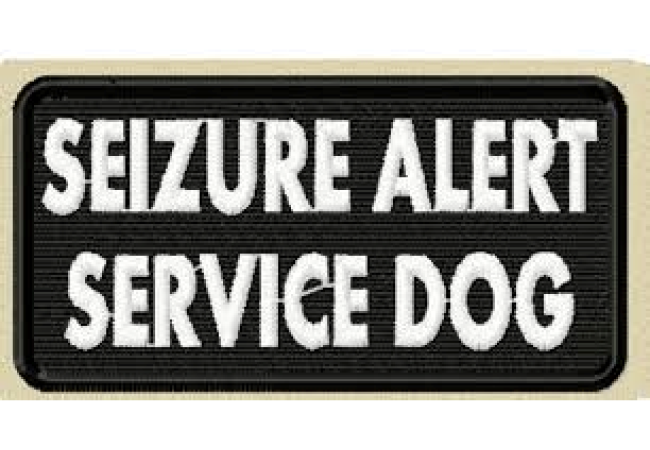Seizure Alert/Response: What is a seizure?

Nerve cells in the brain communicate with each other and the rest of the body by sending and receiving electrical impulses. A seizure occurs when something disrupts those electrical communication signals. Some seizures are a result of permanent health issues such as epilepsy, which is a life-long but manageable disorder. Brain injury before or after birth, genetic conditions, and structural abnormalities in the brain can lead to long-term, recurring seizures.
Did you know that there are several different types of seizure disorders? There are about 65 million people (about twice the population of California) worldwide who have epilepsy. There are about 3.4 million in the United States alone. Every year, the United States sees 150,000 new diagnoses of epilepsy.
Seizures can happen anytime there is a disturbance to brain activity. Infections such as meningitis or any illness accompanied by a high fever, bites or stings, head injuries, or choking may trigger an episode. Alcohol or drug use and withdrawal can result in seizures, or they may be a reaction to other health conditions such as high blood pressure, electrolyte imbalances, kidney or liver failure, low blood glucose, or stroke.
Let us talk about the several types of seizures:
Doctors classify seizures as either focal or generalized, based on how and where abnormal brain activity begins. Seizures may also be classified as an unknown onset, if how the seizure began is not known.
Focal seizures:
Focal seizures result from abnormal electrical activity in one area of your brain. Focal seizures can occur with or without loss of consciousness:
• Focal seizures with impaired awareness:
These seizures involve a change or loss of consciousness or awareness that feels like being in a dream. You may seem awake but stare into space and do not respond normally to your environment or perform repetitive movements. These may include hand rubbing, mouth movements, repeating certain words or walking in circles. You may not remember the seizure or even know that it occurred.
• Focal seizures without loss of consciousness:
These seizures may alter emotions or change the way things look, smell, feel, taste, or sound, but you do not lose consciousness. You may suddenly feel angry, joyful, or sad. Some people have nausea or unusual feelings that are difficult to describe. These seizures may also result in difficulty speaking, involuntary jerking of a body part, such as an arm or a leg, and spontaneous sensory symptoms such as tingling, dizziness, and seeing flashing lights.
Symptoms of focal seizures may be confused with other neurological disorders, such as migraine, narcolepsy, or mental illness.
Generalized seizures
Seizures that appear to involve all areas of the brain are called generalized seizures. Several types of generalized seizures include:
• Absence seizures
Absence seizures, previously known as petit mal seizures, often occur in children and are characterized by staring into space or by subtle body movements, such as eye blinking or lip smacking. They usually last for five to 10 seconds but may happen up to hundreds of times per day. These seizures may occur in clusters and cause a brief loss of awareness.
• Tonic seizures
Tonic seizures cause stiffening of your muscles. These seizures usually affect muscles in your back, arms and legs and may cause you to lose consciousness and fall to the ground.
• Atonic seizures
Atonic seizures, also known as drop seizures, cause a loss of muscle control, which may cause you to suddenly collapse, fall or drop your head.
• Clonic seizures
Clonic seizures are associated with repeated or rhythmic, jerking muscle movements. These seizures usually affect the neck, face, and arms on both sides of the body.
• Myoclonic seizures
Myoclonic seizures usually appear as sudden brief jerks or twitches of your arms and legs. There is often no loss of consciousness.
• Tonic-clonic seizures
Tonic-clonic seizures, previously known as grand mal seizures, are the most dramatic type of epileptic seizure and can cause an abrupt loss of consciousness, body stiffening and shaking, and sometimes loss of bladder control or biting your tongue. They may last for several minutes.
Some types of seizure disorders may be caused by genetic mutations.
The most common cause of seizures is epilepsy. But not every person who has a seizure has epilepsy. Sometimes seizures may be caused or triggered by:
• High fever, which can be associated with an infection such as meningitis
• Lack of sleep
• Flashing lights, moving patterns or other visual stimulants
• Low blood sodium (hyponatremia), which can happen with diuretic therapy
• Medications, such as certain pain relievers, antidepressants, or smoking cessation therapies, that lower the seizure threshold
• Head trauma that causes an area of bleeding in the brain
• Abnormalities of the blood vessels in the brain
• Autoimmune disorders, including systemic lupus erythematosus and multiple sclerosis
• Stroke
• Brain tumor
• Use of illegal or recreational drugs, such as amphetamines or cocaine
• Alcohol misuse, during times of withdrawal or extreme intoxication
• COVID-19 virus infection
Now that we know there are many different types of seizures and what they may look like depending on the individual let us look now at:
What is a Seizure Alert service dog?
A seizure alert dog is a type of service dog that is trained to find help or assist its handler during and/or after a seizure. Dogs chosen for this role will be able to naturally detect an oncoming seizure and are trained in a way to warn their partner of an oncoming seizure. Seizure-response dogs are one of the controversial types of service dogs.
What are some of the tasks or behaviors that a Seizure alert service dog may perform BEFORE a seizure occurs?
• Close eye contact
• Pawing
• Circling or pacing
• Licking
• Acting restlessly
What are some of the tasks a Seizure alert service dog performs DURING a seizure?
• Bark or otherwise alert families when a child has a
seizure while playing outside or in another room.
• Lie next to someone having a seizure to prevent injury.
• The dog may place their body between the seizing individual and the floor to break the fall at the start of a seizure.
• Some dogs are trained to activate some kind of pre-programmed devices, such as a pedal that rings an alarm.
***NOTE: Seizure dogs do not take the place of medical advice for nighttime supervision or other physician-directed monitoring. ***

These are just some of the common tasks that a Seizure service dog can provide to an individual at any given time to help give support to the handler of the service dog. Public interest in seizure assistance dogs has fueled demand for dogs with these skills.
In closing: Could you even imagine having any form of epilepsy and not having a service dog to always be your protector or to alert you prior to a seizure alerting you that you need to take a moment to put yourself in a safe place? This is a scary thought to me.
Can you imagine the feeling of the unknown of when a seizure may come on? The toll that plays on a human’s life with the aid of a service dog? The limitations that it would and could easily place on an individual? Folks, these are SIMPLE things that so many of us take for granted daily! Being able to have that trusted companion that could save your life… That my friend is BEYOND PRICELESS!
–We wanted to say thanks for joining us in this series of education! Feel free to leave any comments, questions, advice that you may share and help someone else.


Leave a Reply